Doctor X (1932)
Directed by: Michael Curtiz
Written by: Earl Baldwin, Robert Tasker
Starring: Fay Wray, Lee Tracy, Lionel Atwill, Preston Foster
USA
AVAILABLE ON DVD
RUNNING TIME: 78 mins
REVIEWED BY: Dr Lenera
Reporter Lee Taylor is investigating a series of nighttime murders in New York City which always take place under the light of a full moon, and where each body has been cannibalised with medical precision, while witnesses describe a horribly disfigured monster. Doctor Xavier is called in for his medical opinion, but the police have an ulterior motive behind this: they wish to investigate Xavier’s medical academy, as the scalpel used to cannibalise the bodies of the victims is exclusive to that institution, and there are several suspects. The police give Xavier 48 hours to apprehend the killer in his own way while Taylor investigates the doctor’s intentions and meets his daughter Joan Xavier….
So we come to the second of the films in the Hollywood Legends Of Horror boxset comprising six ‘30s horror flicks not from Universal but from Warner Bros. and MGM, and I wrote in my review of the first, The Mask of Fu Manchu, that I hadn’t seen any of them except for that particular picture. But I’ve just realised that I’ve seen Mad Love once, over three decades ago, which makes what I said in that first review a lie. Oh well. Doctor X, the first sound horror movie to be set in the present day, the first movie to feature somebody named Dr. Xavier, and which is presented in the set in its early colour version [which is interesting to look at if not entirely successful] in many ways seems like a preceding companion piece to The Mystery Of The Wax Museum [which I will also be covering in due time in addition to its 1953 remake] which featured much of the same cast and crew, and some similar plot elements. It has one glaring fault; Lee Tracy’s hugely irritating and unfunny comical ‘hero’ character. Of course comic relief in a film like this can work as a nice breather and there are some truly great horror comedies, but I mostly just say stone faced through Tracy’s antics. And that’s a shame, because otherwise this is an absolutely cracking ‘20s-style horror mystery which sure kept me guessing, which contains a very early example of what far more recently became known as ‘body horror’, and which has one truly bravura sequence which genuinely had me on edge and which I would say is a highlight of ‘30s horror and one which seems to have inspired many later sequences – and I don’t just mean a particular scene from the remake of The Thing; just think of the many ones in horror films where people are watching something staged only for it to be actually real.
In 1928 Howard W. Constant and Allan C. Miller wrote a play named Terror; it was published in 1931 as Doctor X. Mystery plays with a dash of horror were all the rage around this time. Warners announced a film version to star Bela Lugosi, Loretta Young and Warren Williams, but the writing went on for too long to accommodate them. Almost everything from George Rosner’s screenplay was disregarded and Robert Tasker and Earl Baldwin hired to write a new one, with Head of Production Daryl Zanuck and director Michael Curtiz adding material themselves and steering things away from straight horror to a more comedic piece with the action of the play relegated to the second half because the studio head Jack Warner hated horror films. It was the second Warners film to be filmed in two-colour Technicolor as well as in normal black and white. The two versions differ slightly, employing some different camera angles, the Technicolor camera given priority for the best compositions. The New York waterfront sequences were shot on the set left over from 1926’s Twinkletoes. Director Michael Curtiz would keep pacing up and down in front of the actors during their lunch hour, trying to intimidate them into the right mood. The two-colour version was intended for domestic release and the black and white one for foreign distribution where Technicolor didn’t have facilities. Warners ended up offering the black and white version also to US cinemas at a cheaper price, causing a row with Technicolor. The film was a hit and The Mystery of the Wax Museum put into production very quickly. In the UK, the twice-said line “synthetic flesh” was cut.
A very moody little scene of someone [later to be revealed as one of the main characters] walking along a harbour lighting a cigarette only to be startled by car is followed by the introduction of our wonderful reporter hero Lee Taylor. He tries to follow some people into a mortuary but is stopped and sent away by Detective O’ Halloran. Obviously suspicious of something, he then goes to what seems very much like a brothel to ring the night desk. Well, we’re still pre-Code here, or before when it began to be rigorously enforced, so we’re also allowed to hear mentions of cannibalism even though of course we don’t see anything gruesome. In the morgue, there’s been a new arrival, the latest victim of this killer who cuts out parts of his victim and eats them. O’ Halloran visits the the medical academy or Dr. Xavier, who says he has “an important experiment that demands my attention”, which immediately makes him suspicious, but that’s too obvious isn’t it, even when you know that he played a monstrous killer in The Mystery Of The Wax Museum? O’ Halloran goes around with Xavier questioning the other scientists there and, even though they tend to make the pace drag, I love these kinds of scenes which you often find in Agatha Christie. And all could be suspects here; Wells is an amputee who studies cannibalism. Haines is into “brain drafting” using the blood from animals [we sadly don’t hear any more of this], and Rowitz [who also has an eyepatch and a scar] is looking into the psychological effects of the moon along with grouchy paralytic Duke. Two of these were once stranded on a boat for 48 hours with another sailor who disappeared. There’s also butler Otto whom we know little about, though he likes to wind up maid Mamie.
Around half way through we relocate to Xavier’s mansion which overlooks a cliff, and the suspense does build tremendously as we’re introduced to one of the most unorthodox attempts to unmask a murderer that I’ve ever seen. Everyone except for Wells [because he only has one hand], Otto and Mamie are connected to an electrical system that records their heart rates. When a re-enactment of the last murder carried out by Otto and Mamie – that of a cleaning woman – appears before them, a detector will expose the guilty man. Otto is some amazing butler, because with less than a day’s notice he gets somebody to produce a set of wax figures to represent the Full Moon Killer’s previous victims, a neat forerunner of the follow-up movie, and how on earth do they know that the killer wears a black robe with a hood? I don’t recall any eyewitness descriptions mentioning it. But it all gets very exciting as a power cut interrupts the first session and, after lots of action is heard taking place in the dark, power is restored to reveal a new, cannibalised corpse. Because Mamie is understandably getting scared, somebody has to replace her in the recreation, which of course has to be our heroine Joan, Xavier’s daughter. And then the killer kills Otto and dresses up as him to try and kill Joan for real in front of several men who can’t assist her because they’re all chained up! I imagine that 1932 audiences would have been satisfyingly terrified, and then even grossed out when the villain finally reveals himself and performs a yucky facial transformation over a burning cauldron with something called “synthetic flesh”, a scene of real grisliness for the period. Did David Cronenberg see this?
The final reel also gives us a fight to the finish, but the other main scare set piece is when Taylor is smoking one of his many cigarettes and the killer appears to come behind him, a moment made more effective by it being entirely silent. The menace’s hands appear behind Taylor’s neck, but then that darn buzzer goes off and saves the day, one of the few occasions when the humour works. This is one of many examples of moments which parallel ones in The Mystery Of The Wax Museum, and is that the showerhead thingie from that film as part of the apparatus to measure guilt in this one? Anton Grot’s art design reaches a peak with the main laboratory that’s now one of my favourite mad scientist labs in cinema. Large tubes stretch upwards diagonally from tables and curved beams are suspended over the chairs that are occupied by the suspects while we’re never allowed to forget the art deco surroundings. The colour process is a mixed bag. The main hues are green and a sort of orange/pink, and cinematographer Ray Rennahan often uses these in a very artistic way. Green often dominates but is continually held back from taking over the entirety of the screen, such as many moments when we see characters; they’re green-hued but their faces are pink. During the climax when we have to guess who the killer is with not long to spare, shadows appear over portions of faces in a very early example of classic film noir lighting. But the process never looks natural and at times can’t help but look like what it is; a black and white movie that’s been colourised, just like they began to do four decades later. But I’m basing my opinion on a print that’s clearly faded and worn. My review of The Mystery Of The Wax Museum will be from a fully restored Blu-ray, so my opinion of this old two-strip colour process may change.
The fact that, despite a bit of ropey plotting, I enjoyed so much of Doctor X makes the main issue I had with it even more glaring. Taylor is first seen by Xavier’s daughter Joan when he’s up a ladder looking in through a window. She’s cold to him, especially as he wrote a story which ruined her father’s reputation. But of course you know that things will change, even though I can’t see what on earth she’d see in this annoying wisecracking idiot. The two main long running gags are Taylor having a ‘handshake buzzer’ that he always forgets about, and being scared of things. At one point he’s shut in a room full of skeletons, and Lou Costello or Bob Hope would have pulled such a scene off, but Tracy just grates and doesn’t seem to have much charisma either; he was typecast in this kind of part though for the life of me I can’t see why. But Fay Wray, in the first of her Scream Queen roles which garnered her so many fans that also comprised The Most Dangerous Game, The Vampire Bat and a certain big ape movie, is fantastic; she lights up the screen, especially with her green dress, even if her role is little more than decorative and then somebody to be rescued. I especially like the scene when she’s just a bit flirty when she tries to get Tracy to delay his scandalous news coverage; she was a real classy yet sexy lady. Characterisation isn’t bad elsewhere; everybody gets some interesting and not always savoury traits. I genuinely feel that, if it wasn’t for the major flaw [which to be fair many others probably don’t have a problem with] I’ve mentioned, Doctor X would be a film deserving of being ranked with the likes of Frankenstein, The Black Cat and The Island Of Lost Souls in that great golden age of horror that was the first half of the ‘30s. As it stands, it’s still, I feel, a little unappreciated, with a hell of a lot of good stuff in it.
Rating: 










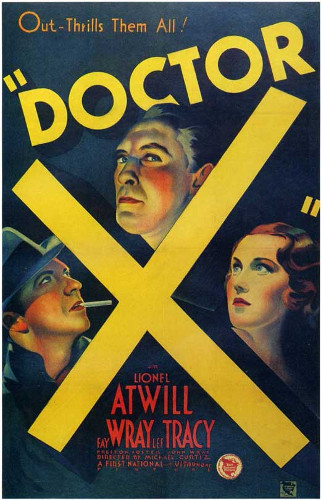
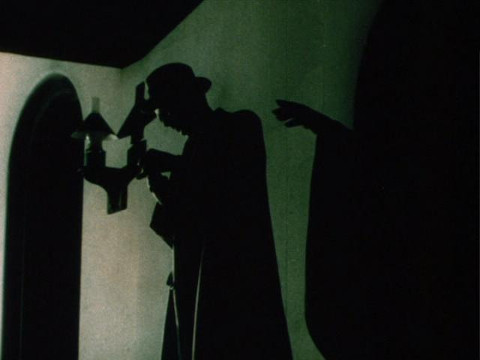
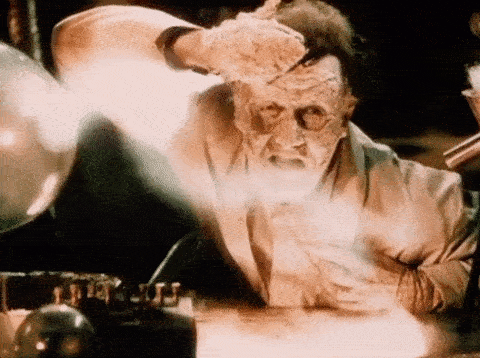

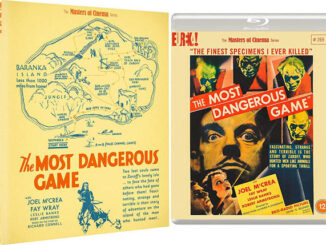
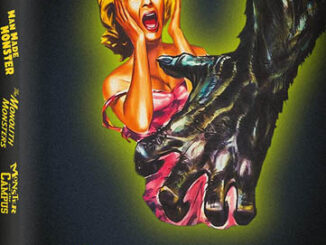
Be the first to comment